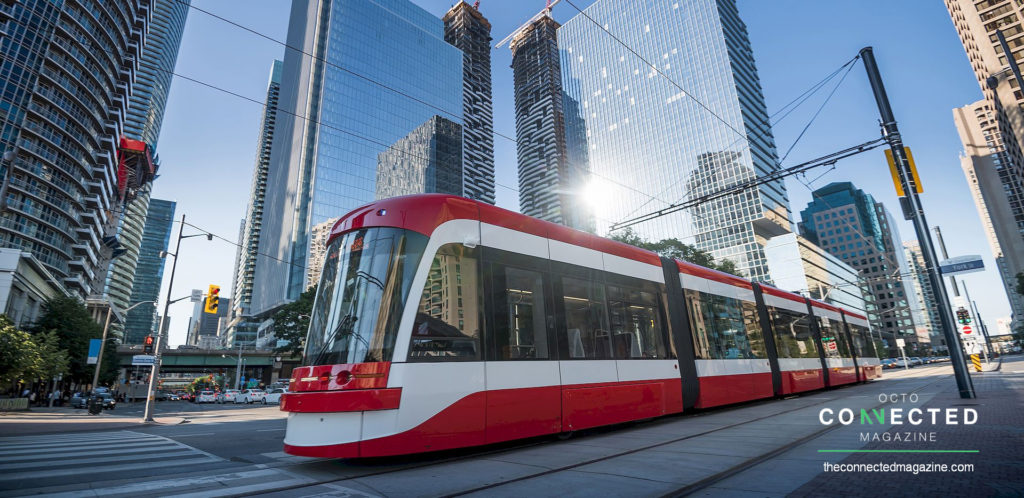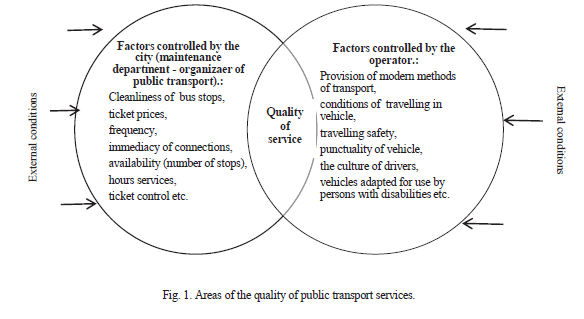
Researcher Katarzina Cheba from the West Pomeranian University of Technology in Szczecin, Polandand Sebastian Saniuk from the University of Zielona Gora, Zielona Gora, Poland presented an article at the 6th Transport Research Arena, regarding urban mobility – identification, measurement and evaluation. The article provides an a-up to date review on this issue. Here there are some of the key issues.
The purpose of the study is an attempt to make a model of the transportation preferences of urban residents, in particular: the opinions of citizens concerning their perception of the quality of the public transport services and getting to know their preferences and circumstances of their making decisions concerning the choice of urban transport. These analyzes are particularly important in the case of separation of tasks related to urban transport between the organizer and the operator. The study shows that these tasks, although carried out by separate entities are seen by the inhabitants together. This has an important impact on the effective management of the quality of urban transport services.
Identification
The problem considered in this paper is the results from a comprehensive analysis of the public transportation system in a medium-sized metropolitan area (Gorzow city in Poland). The system is based on buses and trams, but the dominating component is the bus transportation sub-system (85% of the km covered). The bus sub-system is fairly well developed and is composed of 36 lines covering an area of 80 km2 – the majority of the city. As opposed, the tram sub-system is composed of 3 lines only. A significant problem of the city in terms of public transport is the decreasing frequency of running vehicles (both buses and trams). The main reason for these changes is weakening citizens’ interest in using this mode of transport. For nearly a decade, Gorzow has been experiencing a decline in demand for public transport services, demand for which now stands at more than 50% less compared to 2005.
A result of this decline is the gradual reduction of the size of the transport offer available in the city. The reduced transport offer (measured in terms of operational work) refers to both bus and tram. The immediate cause of the observed market trends are unfavorable changes in the number and structure of Gorzow residents and neighboring municipalities covered by the transport service, an increased number of cars, an increase in the overall welfare of society, the situation on the local labor market and factors such as the availability of parking and individual circumstances including, for example: reducing transport congestion in the city as a result of completion in 2007 of the Gorzow bypass.
An additional problem is unfavorable demographic trends (an aging population moving less within the city). The consequence of these changes is primarily rising ticket prices – particularly affecting the inhabitants and reducing the frequency of running vehicles.
The authors highlight that these factors lead to lower and lower assessment of the quality of collective transport services. It is therefore more important to know how the residents decide on the choice of means of transport by which they will move around the city and conduct a profound analysis of the quality of services provided within the urban public transport.
Urban mobility – the proposal of measurement
This paper presents the results of modelling transport behavior of inhabitants using factor analysis. Factor analysis is a statistical method used to describe variability among observed, correlated variables in terms of a potentially lower number of unobserved variables called factors. The applications of factor analytic techniques are: to reduce the number of variables and to detect structure in the relationships between variables, that is to classify variables. Therefore, factor analysis is applied as a data reduction or structure detection method.

The research carried out in the city in 2007–2011 and repeated in 2014 confirms a decline in average assessment of the level of satisfaction with the quality of services provided within the urban public transport, particularly evident in 2014. The observed decrease in ratings applies to both basic areas of determining the quality of such services, such as ticket prices, frequency, safety, directness connections (so called communication of vehicles) or punctuality, as well as the so-called areas covering complementary factors, e.g.: the culture of drivers or the manner of inspecting tickets. tickets. Although in not all of these areas there was a real reduction in the quality of services, lower scores concerning the areas of quality also resulted in a reduction of assessments in other areas.
Factor 1 covers the most important aspects of the quality of services provided in the context of public transport which are: punctuality, frequency, accessibility, immediacy, the way the provision of services works as an hourly schedule and ticket prices. Apart from punctuality, all others are regulated by the transport organizer. These factors can be in principle treated as synonyms of the quality of these services. This result confirms the need to cooperate in the development of transport offers between the organizer and the operator.
Factor 2 includes 3 aspects of the study: safety, equipment with modern means of transport and travelling conditions inside vehicles – all are regulated by the operator. They are supplements of the points raised by previous factor.
However, in the case of the third factor all these aspects of the study which should be considered as additional were included, such as: culture of drivers, cleanliness of stops, or the way of conducting inspections. As in the case of the first factor, also in this case, aspects regulated by the organizer are by respondents evaluated together with those that are regulated by the operator.
Moreover, in a situation where this organizer (City Hall) decides on key areas affecting the quality of public transport services it is in charge of proper preparation of conditions of the transport. The researchers concluded that actions taken by the operator are basically secondary to the conditions laid down by the organizer. Such influence is significantly lower in relation to the operator’s ability to influence the quality of public transport services as perceived by residents of the city.
The authors stress that coordination and integration of activities undertaken by the transport organizer in the city (public authorities) and selected operators, e.g. by tender is especially important in the case of decreasing residents’ interest in the use of services provided within urban public transport.
Conclusions
Knowledge of the preferences and communication behavior of the inhabitants allows for proper development of the transport offer, guaranteeing high quality compliance with the requirements of modern passengers, which is particularly important in the situation of increasing urban problems of excessively rapid growth of private transport. Understanding human behavior can then be used to develop strategies that may help steer the respondents towards a higher use of public transport. Therefore, it is vital to conduct this type of research, limited not only to cities where transport congestion is already experienced.
As the authors of the article explain, the analysis presented in this paper shows that we can observe a high quality of services when performing tasks covered both by the organizer, and the operator is assessed by passengers relatively highly. The estimated model of factor analysis demonstrated variables that are evaluated jointly by residents. This statistical analysis drew useful information about the factors that may affect the mobility behavior of residents. Statistics is often a powerful tool that can be used by policy and decision makers to gain better insight of the mobility behavior of residents and to apply adaptive and more effective mobility management policies.